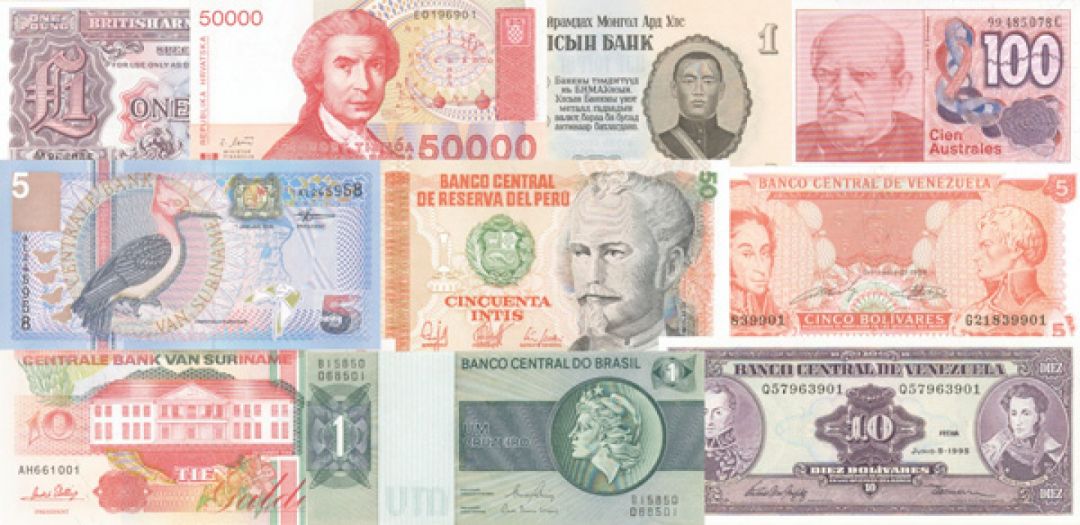World Paper Money Collection - 100 Different Uncirculated Notes - Authentic Foreign Currency Group - Uncirculated Paper Money
Inv# FM1285 Foreign Paper MoneyArgentina
Belarus
Bolivia
Bulgaria
Cambodia
China
Costa Rica
Croatia
Egypt
England
India
Indonesia
Iraq
Laos
Nepal
Nicaragua
Pakistan
Yugoslavia
Zambia
Afghanistan
Iran
Zaire
Bosnia-Herzegovina
Suriname
Myanmar
Foreign Paper Money Collection of 100 different notes. Choice Crisp Uncirculated Condition. Countries that may be included are:
Albania
Argentina
Belarus
Bolivia
Bulgaria
Cambodia
China
Costa Rica
Croatia
Egypt
England
India
Indonesia
Iraq
Laos
Nepal
Nicaragua
Pakistan
Yugoslavia
Zambia
Afghanistan
Iran
Zaire
Bosnia-Herzegovina
Suriname
Myanmar
Paper currency first developed in Tang dynasty China during the 7th century, although true paper money did not appear until the 11th century, during the Song dynasty. The use of paper currency later spread throughout the Mongol Empire or Yuan dynasty China. European explorers like Marco Polo introduced the concept in Europe during the 13th century. Napoleon issued paper banknotes in the early 1800s. Cash paper money originated as receipts for value held on account "value received", and should not be conflated with promissory "sight bills" which were issued with a promise to convert at a later date.
The perception of banknotes as money has evolved over time. Originally, money was based on precious metals. Banknotes were seen by some as an I.O.U. or promissory note: a promise to pay someone in precious metal on presentation (see representative money). But they were readily accepted - for convenience and security - in London, for example, from the late 1600s onwards. With the removal of precious metals from the monetary system, banknotes evolved into pure fiat money. Read more at https://en.wikipedia.org/wiki/Banknote










Ebay ID: labarre_galleries